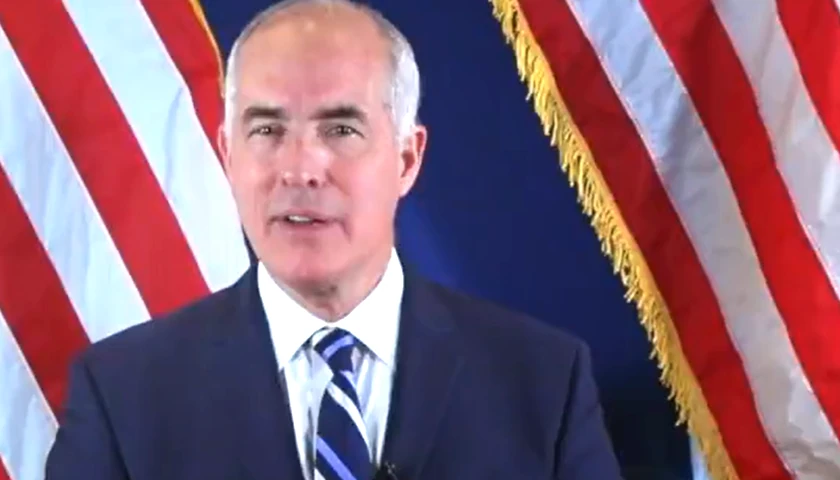by Will Kessler
The surge of illegal immigration under President Joe Biden has exacerbated an already costly housing market for average Americans by worsening a shelter shortage, experts told the Daily Caller News Foundation.
The U.S. currently has an estimated shortage of 4 million to 7 million homes as developers struggle to keep up with demand amid harsh financial conditions and burdensome regulatory processes, according to Pew Charitable Trusts. Average Americans looking for a home are being squeezed by rising housing costs due to inflation and elevated mortgage rates, but the recent influx of illegal immigrants is putting even more stress on the system by aggravating the current shortage of supply in the housing market at a rate that developers can’t keep up with, according to experts who spoke to the DCNF.
“Importing millions of people will clearly increase the demand for all necessities, including housing, and that’s true whether the people come here legally or illegally,” E.J. Antoni, a research fellow at the Heritage Foundation’s Grover M. Hermann Center for the Federal Budget, told the DCNF. “The effects seem to be most noticeable, or at least have gotten the most media attention, in border states and so-called sanctuary cities where Governor Abbott has been sending the flood of illegals.”
 The foreign-born population under Biden has surged by 6.6 million, with an estimated 58% of the increase being due to illegal immigration, according to research from the Center for Immigration Studies (CIS).
The foreign-born population under Biden has surged by 6.6 million, with an estimated 58% of the increase being due to illegal immigration, according to research from the Center for Immigration Studies (CIS).
“I’m not sure anybody can exactly quantify the effect,” Ira Mehlman, media director of the Federation for American Immigration Reform, told the DCNF. “Logically, when people come here in large numbers, they need a place to live, and supply and demand dictate that when there’s more demand than supply, the price goes up.”
Miami had over 626,000 total illegal immigrants, or 11% of the population, in 2021, while Houston had around 413,000, San Diego had 188,847 and Loudoun County, Virginia, had over 26,000, or 6.3% of the county’s population, according to the Federation for American Immigration Reform.
Republican Texas Gov. Greg Abbot, who has been forced to bear the brunt of a large portion of the influx on the southern border, has resorted to bussing thousands of migrants to cities including New York City, Denver and Chicago to alleviate stress in his state.
“Go to the high-impact areas — places like New York City or Denver — it certainly has an impact on people at the lower end of the housing market,” Melhman told the DCNF. “Obviously, just the sheer number of available housing and even hotel rooms that are being taken up now in places like New York City squeezes the availability for other people who are looking for an affordable place to live.”
New York City has resorted to using hotels as migrant shelters to address the huge influx of immigrants. Democratic leaders in New York City, Denver, Massachusetts, Illinois and Washington, D.C., all declared states of emergency in response to the influx of migrants in the second half of 2023.
As of March 10, 2024, around 64,600 people are being housed in New York City-funded shelters, and 182,900 have come through the system since spring 2022, according to data from the city’s comptroller. Denver shelters were housing 4,500 migrants as of January, claiming to be the largest recipient of migrants per capita, according to The Colorado Sun.
“All of those people have to find a place to live, and they can only live in government-provided housing and sanctuary cities for so long,” Andrew Arthur, a resident fellow in law and policy at CIS, told the DCNF. “So that’s going to push all those folks out. They’re probably going to go into multifamily housing.”
New York and Miami have seen their home prices rise 8.7% and 8.0% in the last year ending in February, higher than the 6.4% average for the U.S., according to data from S&P Global.
Even before the most recent surge in illegal immigration, the U.S. was already behind on the demand for affordable apartments, seeing the total number decline by 4.7 million from 2015 to 2020, according to a report from the National Multifamily Housing Council. The report found that immigration was a significant driver of apartment demand, in particular.
“It can take a year and a half to two years to actually get one apartment built, so there’s no way to accommodate this massive illegal flow that exacerbates the housing shortage in the United States and that, in turn, increases the amount of money that multifamily housing businesses charge for those units,” Arthur told the DCNF.
Looking To Retire Soon? You’ll Need Over $1 Million To Live ‘Comfortably’ Under Biden, Report Finds https://t.co/skSdW5d6DT
— Daily Caller (@DailyCaller) May 21, 2024
The U.S. built 1.45 million new privately owned housing units in 2023, largely concentrated in certain states like Texas as opposed to California due to costs and permitting regulations, according to research from Consumer Affairs. The cost of constructing a home has risen by nearly $100,000 per unit from 2019 to 2022, currently totaling around $392,000 on average.
“At the rate they are coming in, you can’t build quickly enough,” Arthur told the DCNF. “You need to actually get the financing, which means that you need to prove that there’s going to be a need, and if you’re talking about an uncertain number of people coming in, which is certainly true now, getting that financing becomes all the more difficult.”
Arthur argues that since the government does not disclose how many people have entered the country illegally, developers are left trying to guess the demand in the market for projects that often take years to complete.
“While advocates of illegal immigration claim that importing vast numbers of low-wage labor will reduce the cost of construction, that does not address the structural problems in the housing market surrounding interest rates and record high material costs,” Antoni told the DCNF. “Furthermore, there is no empirical evidence to suggest that illegal immigrants today increase the supply of housing brought to market more than they increase the demand for housing.”
Developers looking to build new housing are facing immense resistance due to an increase in the cost of credit and high inflation that have raised construction expenses. The Federal Reserve has set its federal funds rate to a range of 5.25% and 5.50%, a 23-year high, increasing interest rates across the board in an effort to tame inflation.
Inflation has raised prices a total of 19.3% since Biden first took office, most recently rising 3.4% year-over-year in April. Shelter costs have risen faster than the pace of general inflation, increasing by 20.9% since January 2021.
While the influx of immigrants has stressed housing prices, it has also served to boost total U.S. labor counts, with Fed Chair Jerome Powell noting in early April that the uptick is helping alleviate shortages in the job market, according to Bloomberg. Accompanying the increase in the number of foreign-born workers is a smaller decline in native workers.
“The damage is done with respect to the market. The market is going to respond, but you’re also talking about a population of people, again, this is not universally true, but by and large, they have very low levels of income, they don’t have any job skills and they haven’t had the benefits of good education,” Arthur told the DCNF. “So they’re primarily going to be occupying space at the lowest level, which means that they’re going to be directly in competition with the most disadvantaged Americans, not just in the job market but in the housing market as well.”
The White House did not respond to a request to comment from the DCNF.
– – –
Will Kessler is a reporter at Daily Caller News Foundation.
Photo “Illegal Immigrants” by Chief Patrol Agent Gloria I. Chavez.



